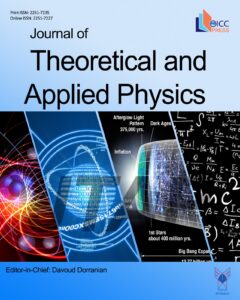Capacitive properties of zinc oxide thin films by radiofrequency magnetron sputtering
Authors
Abstract
AbstractThe study focused on the production of zinc oxide (ZnO) thin films as a dielectric material for use in metal–insulator–semiconductor capacitors. The objective of this study has demonstrated the frequency dependence of conductivity and capacity. Zinc oxide (ZnO) was thin films deposited by a silicon wavelength sputteringmagnetron cathode sputtering. The capacitive properties of ZnO zinc oxide were studied at room temperature. The frequency dependence of the conductivity, capacitance and the measured current–voltage (I–V) characteristics of ZnO zinc oxide thin films were studied in the frequency range from 5 kHz to 13 MHz. It is shown that the conductivity is total. Indeed, the measurement of the conductivity in alternating regime obeys the Arrhenius equation. In addition, the measured I–V characteristics of the structures studied at 10 kHz and 10 MHz clearly revealed areas of accumulation, depletion and inversion in the plots. It has been observed that AC conductivity and capacity in the ZnO thin films (ZnO) are frequency dependent. This dependence indicates that the conduction is thermally activated and maintains the correlated barrier of the charge carrier on the localized states as a function of the experimental data. The FBAR (expand) devices with the ZnO films exhibited a pronounced resonance peak centered at 537 MHz with a k2 coupling coefficient of 7%. It found therefore that the impedance matching of the FBAR could be easily achieved simply by controlling the resonance the resonator.



